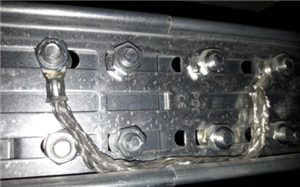
Saw this recently on site, there is a bond across every cable ladder joint. I do not believe that this is necessary as this is not an exposed-conductive-part or an extraneous-conductive-part. Am I right?
mrf

mrf:
..and yet almost every specification I see calls for it...
We're about to take you to the IET registration website. Don't worry though, you'll be sent straight back to the community after completing the registration.
Continue to the IET registration site